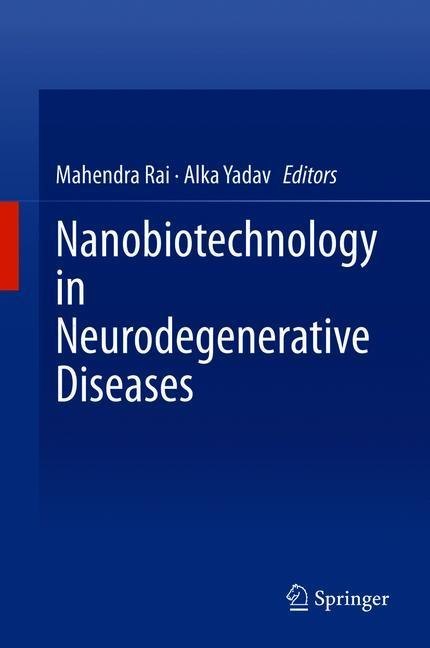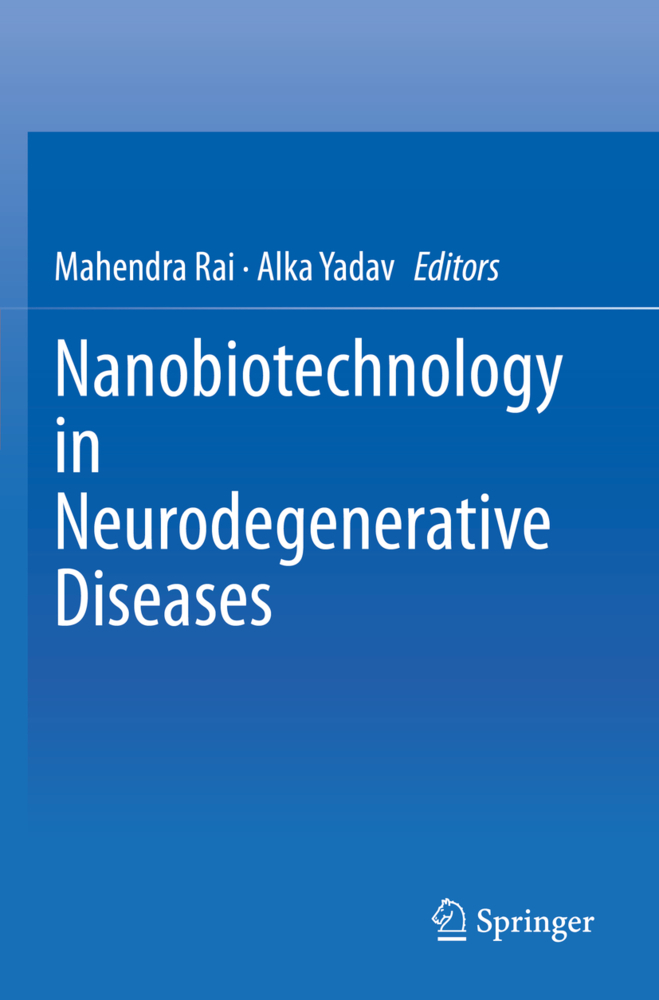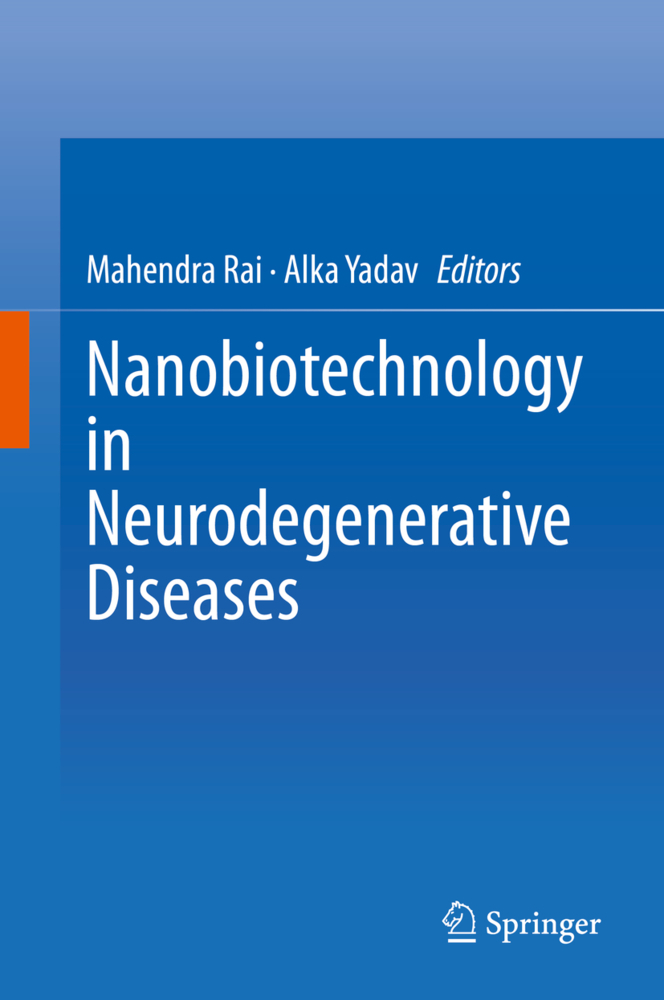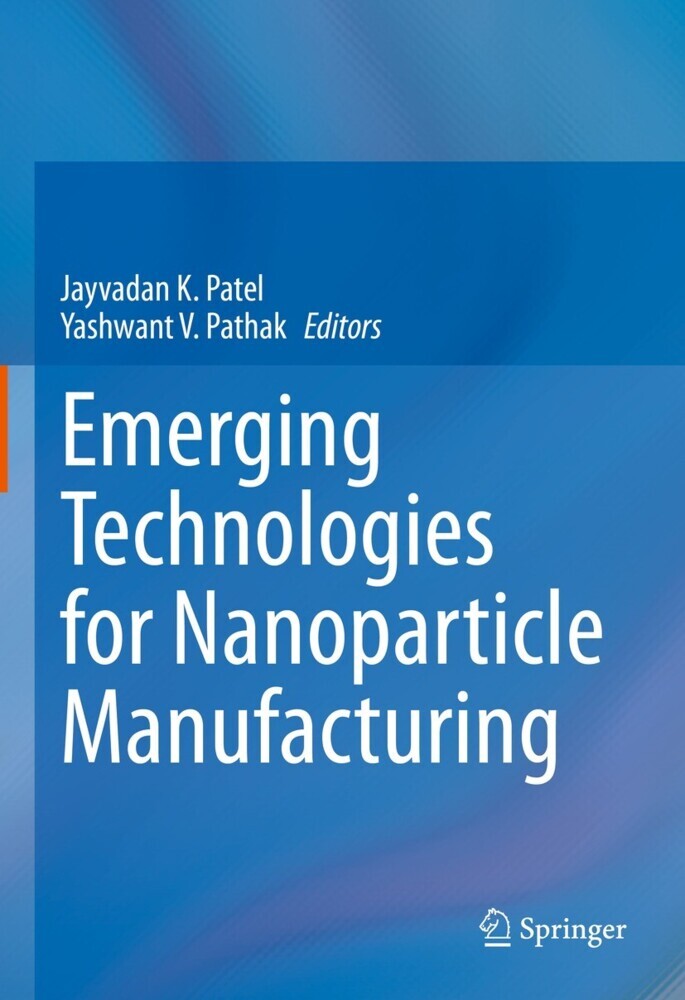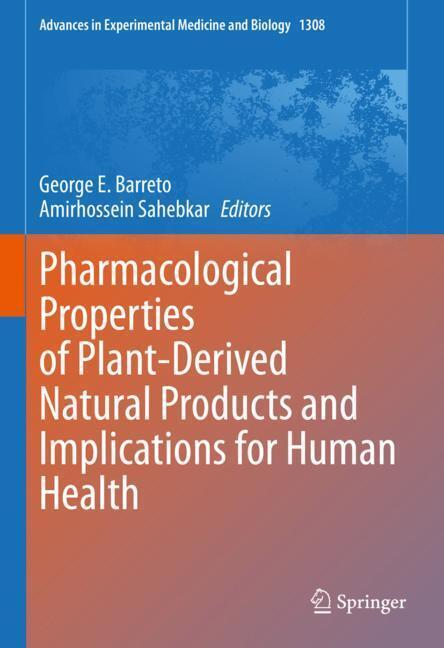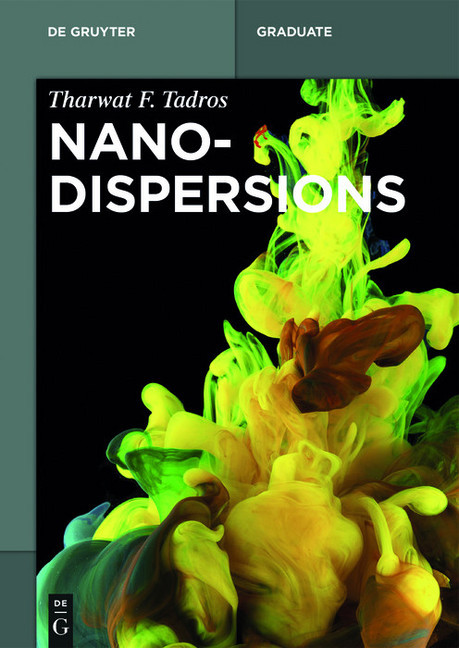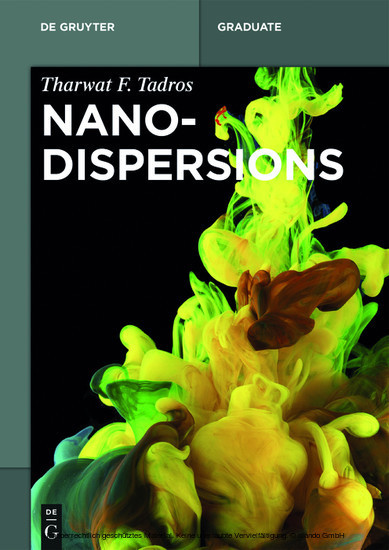Nanobiotechnology in Neurodegenerative Diseases
Nanobiotechnology in Neurodegenerative Diseases
This book focuses on neurodegenerative diseases which have become a major threat to human health. Neurodegenerative diseases are age related disorders and have become increasingly prevalent in the elderly population in recent years. Hence, there is an urgent need to study and develop new strategies and alternative methods for the treatment of neurodegenerative diseases. This book showcases the promises that nanobiotechnology brings in research, diagnosis, and treatment of neurodegenerative diseases. It is very beneficial for varied group of readers including nanotechnologists, biotechnologists, pharmacists, medical professionals, bioengineers, biochemists and researchers working in this field. Nanobiotechnology in Neurodegenerative Diseases include various chapters including neurodegeneration and neurodegenerative diseases, nanotechnology for the rescue of neurodegenerative diseases, promising potential of nanomaterials for diagnosis and therapy of neurodegenerative diseases, nanotechnology mediated nose-to-brain drug delivery, and formulation and characterization of intranasal nanoparticles of antiretroviral drugs.
Dr. Mahendra Rai is Senior Professor and UGC-BSR Faculty Fellow at the Department of Biotechnology, Sant Gadge Baba Amravati University at Amravati, Maharashtra, India. He was a Visiting Scientist at the Department of Bioenergetics, University of Geneva, Switzerland and at the Department of Plant Protection of Debrecen University, Debrecen, Hungary. He visited Department of Chemical Biology, University of Campinas, Brazil under Indo-Brazil Research Programme (DST-CNPq collaboration). He was visiting Professor in Nicolaus Copernicus University, Torun, Poland. He was invited by State University of Campinas, Brazil. Moreover, he was also visiting professor in Ostrava, Czech Republic. His area of expertise includes microbial biotechnology and nanobiotechnology. His present research interests are nanobiotechnology in medicine, agriculture and bioethanol production. He has published more than 400 research papers in national and international journals. In addition, he has edited/authored 50 books and 6 patents.
Dr. Alka Yadav, is a Post Doctoral fellow with Prof Mahendra Rai. She has completed her Master's and Doctoral degree in Biotechnology from Sant Gadge Baba Amravati University, Amravati, Maharashtra, India. She has nine years experience in writing reviews, research articles and book chapters. She has published several research and review articles in high impact factor journals. She also has many book chapters to her credit. She has received the award for the most cited article by Elsevier for the article Silver nanoparticles: as a new generation of antimicrobials published in Biotechnology Advances. She has also worked as guest reviewer with publications like Wiley Publications, Elsevier and SAGE Publications. She has a process patent to her credit entitled 'Processo de obtencao deum filme basedo em compositos de polisasacarideos de prata, filme obtido e uso'. Her areas of interest include Plant Biotechnology, Mycology, Nanobiotechnology, Myconanotechnology and Nano-antimicrobials.
Dr. Mahendra Rai is Senior Professor and UGC-BSR Faculty Fellow at the Department of Biotechnology, Sant Gadge Baba Amravati University at Amravati, Maharashtra, India. He was a Visiting Scientist at the Department of Bioenergetics, University of Geneva, Switzerland and at the Department of Plant Protection of Debrecen University, Debrecen, Hungary. He visited Department of Chemical Biology, University of Campinas, Brazil under Indo-Brazil Research Programme (DST-CNPq collaboration). He was visiting Professor in Nicolaus Copernicus University, Torun, Poland. He was invited by State University of Campinas, Brazil. Moreover, he was also visiting professor in Ostrava, Czech Republic. His area of expertise includes microbial biotechnology and nanobiotechnology. His present research interests are nanobiotechnology in medicine, agriculture and bioethanol production. He has published more than 400 research papers in national and international journals. In addition, he has edited/authored 50 books and 6 patents.
Dr. Alka Yadav, is a Post Doctoral fellow with Prof Mahendra Rai. She has completed her Master's and Doctoral degree in Biotechnology from Sant Gadge Baba Amravati University, Amravati, Maharashtra, India. She has nine years experience in writing reviews, research articles and book chapters. She has published several research and review articles in high impact factor journals. She also has many book chapters to her credit. She has received the award for the most cited article by Elsevier for the article Silver nanoparticles: as a new generation of antimicrobials published in Biotechnology Advances. She has also worked as guest reviewer with publications like Wiley Publications, Elsevier and SAGE Publications. She has a process patent to her credit entitled 'Processo de obtencao deum filme basedo em compositos de polisasacarideos de prata, filme obtido e uso'. Her areas of interest include Plant Biotechnology, Mycology, Nanobiotechnology, Myconanotechnology and Nano-antimicrobials.
1;Preface;5 2;Contents;7 3;Contributors;9 4;Chapter 1: Neurodegenerative Diseases: The Real Problem and Nanobiotechnological Solutions;13 4.1;1.1 Introduction;14 4.2;1.2 Neurodegenerative Diseases;15 4.2.1;1.2.1 Alzheimer's Disease;15 4.2.2;1.2.2 Parkinson's Disease;16 4.3;1.3 Nanomaterials and Biomedical Applications;16 4.4;1.4 Role of Nanotechnology in the Treatment of Neurodegenerative Diseases;17 4.5;1.5 Mechanism of Nanoparticle Transport across the Blood-Brain Barrier;21 4.6;1.6 Role of Nanosized Exosomes in the Management of Neurodegenerative Diseases;21 4.7;1.7 Nanobiosensor for Rapid Detection of Neurodegenerative Diseases;23 4.8;1.8 Conclusion;24 4.9;References;25 5;Chapter 2: Nanotechnology at the Rescue of Neurodegenerative Diseases: Tools for Early Diagnostic;30 5.1;2.1 Introduction;31 5.2;2.2 Nanoparticles in Functional Investigation of Brain Vascular System Physiology and Physiopathology;34 5.2.1;2.2.1 Testing the Integrity of the BBB with NPs: Leakage and Microbleed;34 5.2.2;2.2.2 Blood Flow, Volume, and Vascular Density;35 5.2.3;2.2.3 Cerebrospinal Fluid, Interstitial Fluid, and Lymphatic Drainage of the Brain;35 5.2.4;2.2.4 Oxygen Level Detection;36 5.2.5;2.2.5 Vascular Imaging Enhancement with NPs;36 5.3;2.3 Nanoparticles in Functional Investigation of Healthy, Neuroinflammation, and Neurodegeneration in Brain Parenchyma;36 5.3.1;2.3.1 Brain Parenchyma, ECM, and Diffusion;37 5.3.2;2.3.2 Glucose Sensing;37 5.3.3;2.3.3 Functional Mapping of Brain Activity;38 5.3.3.1;2.3.3.1 Neurotransmitter;38 5.3.3.2;2.3.3.2 Neurotransmitter Receptor Investigations;39 5.3.3.3;2.3.3.3 Other Functional Investigations;40 5.3.4;2.3.4 Neuroinflammation and Immune Cell Infiltration;40 5.3.5;2.3.5 Nanoprobes to Detect ROS and NOS Levels and Production;41 5.4;2.4 Nanoparticles for Functional Investigation of Alzheimer's Disease Markers;42 5.4.1;2.4.1 Detection and Imaging of Amyloid Plaques;42 5.4.1.1;2.4.1.1 Strategies with Facilitation of BBB Crossing;44 5.4.1.2;2.4.1.2 Strategies without Facilitation of BBB Crossing;45 5.4.2;2.4.2 Detection of Cerebral Angiopathy Amyloid;46 5.4.3;2.4.3 Detection of Tau Phosphorylation and Aggregation;47 5.5;2.5 Nanoparticles in Functional Investigation of Parkinson's Disease and Other NDDs;47 5.5.1;2.5.1 Dopamine and Dopamine Receptor Detection;49 5.5.2;2.5.2 ?-Synuclein Detection in PD;49 5.5.3;2.5.3 Multiple Sclerosis;49 5.5.4;2.5.4 Huntington's Disease;50 5.6;2.6 Perspectives and Outlook;51 5.7;References;53 6;Chapter 3: The Role of Nanomedicine in the Treatment of Neurodegenerative Disorders;60 6.1;3.1 Introduction;60 6.1.1;3.1.1 Neurodegenerative Diseases;60 6.1.2;3.1.2 Nanoscience;61 6.1.3;3.1.3 Nanobiomaterials;61 6.1.4;3.1.4 Polymeric Micelles and Other Nanoparticles;62 6.1.5;3.1.5 Disease Therapy;63 6.2;3.2 Recent Developments in the Treatment of ND Using Nanomaterials;64 6.3;3.3 Cell-Mediated Delivery of Nanocarriers to the Brain;65 6.4;3.4 Nanogels;69 6.5;3.5 Other Nanomaterials;70 6.6;3.6 Nanorobots;71 6.7;3.7 Conclusion;71 6.8;References;71 7;Chapter 4: Nanobiotechnology in Neurodegenerative Diseases;75 7.1;4.1 Introduction;76 7.2;4.2 Pathology, Phenotype, and Biochemistry;77 7.3;4.3 Agents for Relieving Parkinson's Disease;81 7.3.1;4.3.1 Antiparkinsonics Drugs;82 7.3.1.1;4.3.1.1 Dopamine and DOPA-Decarboxylase Inhibitors;82 7.3.1.2;4.3.1.2 Monoamine Oxidase B and Catechol-O-Methyltransferase Inhibitors;84 7.3.1.3;4.3.1.3 Agonists of Dopamine Receptors;85 7.3.2;4.3.2 Antiparkinson Experimental Nanoformulations;90 7.4;4.4 Anti-Alzheimer's Drugs;95 7.4.1;4.4.1 Drugs Approved for Alzheimer's Disease;96 7.4.1.1;4.4.1.1 Competitive Cholinesterase Inhibitors;96 7.4.1.2;4.4.1.2 Noncompetitive Cholinesterase Inhibitors;99 7.4.1.3;4.4.1.3 NMDA Receptor Antagonists;101 7.4.2;4.4.2 Nanoformulations of Experimental Anti-AD Compounds;102 7.4.3;4.4.3 Effect of NPs on Tau Protein;112 7.5;4.5 Other Diseases;116 7.5.1;4.5.1 Huntington's Disease;116 7.5.2;4.5.2 Wilson's Disease;118 7.5.3;4.5.3 Amyotrop
| ISBN | 9783030309305 |
|---|---|
| Artikelnummer | 9783030309305 |
| Medientyp | E-Book - PDF |
| Copyrightjahr | 2019 |
| Verlag | Springer-Verlag |
| Umfang | 403 Seiten |
| Sprache | Englisch |
| Kopierschutz | Digitales Wasserzeichen |

